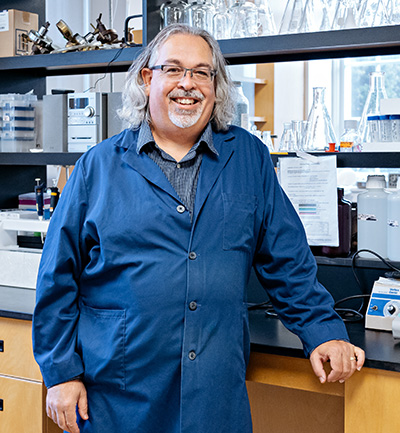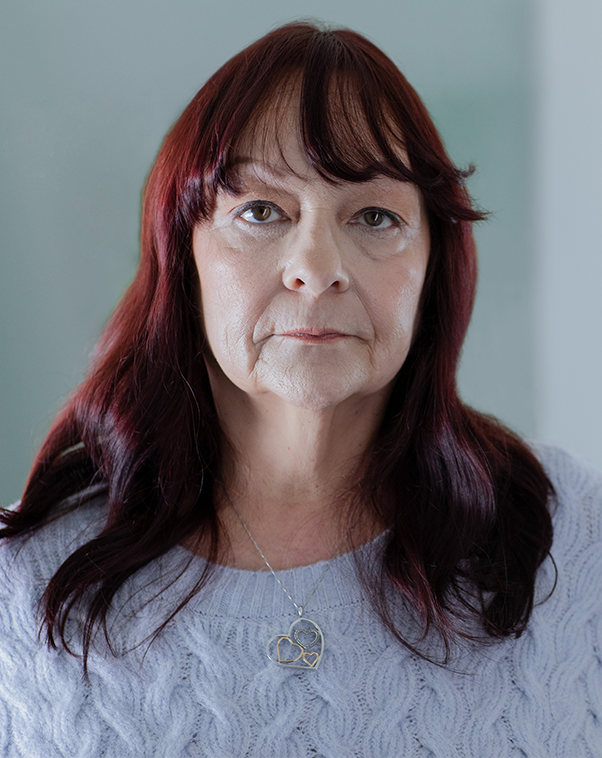
Protecting heart health after menopause
Dr. Glen Pyle’s discoveries will reduce heart disease in older women — and help men too
Chapter 1 Menopause mystery
For the first half of their lives, women face a lower risk of heart disease than men. After menopause, that difference disappears. But the reasons why are a mystery.
“We really have a lack of understanding about what goes on in menopause,” says Dr. Glen Pyle, a molecular cardiology researcher at the University of Guelph and the IMPART Investigator Network at Dalhousie Medicine.
- Learn more about the gaps that threaten women’s heart and brain health.
For a long time, scientists thought the drop in estrogen levels during menopause explained the increased cardiovascular risk. If you replaced that estrogen, they reasoned, you could restore its protective benefits.
But giving older women hormone replacement therapy produced mixed results. In some cases, it reduced their risk of heart attack. In other cases, though, it didn’t produce benefits. “That started to expose some pretty fundamental questions,” says Dr. Pyle.
So, with funding from Heart & Stroke donors, he set out to find answers.
Chapter 2 Heart changes start early
Dr. Pyle homed in on the molecular changes that take place in heart cells during menopause — something that no one else had examined. He and his team are using a mouse model that mimics the slow fluctuations in estrogen that women experience during natural menopause.

Dr. Glen Pyle’s research in molecular cardiology explores the link between menopause and heart disease.

Heart & Stroke donors help fund the work of Dr. Pyle’s research team.

Dr. Pyle and his team were the first to study molecular changes in heart cells during menopause.
So far, they’ve made a couple of key discoveries. One is that cardiac changes start early, several years before a woman starts to experience symptoms such as hot flashes.
The other is the nature of those changes. Although the heart continues to function normally after menopause, some molecular pathways within the cells start to change. This leads to inflammation and cell destruction, making the heart more vulnerable to heart attack, arrhythmias, and heart failure.
Dr. Pyle’s team also found that the heart cells are less responsive to estrogen as menopause progresses. That means starting hormone replacement therapy in your 40s will likely provide better cardiac protection than starting in your 70s. “If you’re going to intervene, you have to go back much earlier,” says Dr. Pyle.
Chapter 3 Better insights, better outcomes
Based on these findings, he and his team are now exploring the benefits of targeted estrogen therapy very early in menopause, before the heart changes occur. Those potential benefits include reducing a woman’s risk of heart attack, limiting the damage if a heart attack occurs, and reducing the risk of heart failure down the road.

Dr. Pyle with his research team at the University of Guelph (from left): Ciara Barry, Kashika Sareen, Nicole Ramirez-Gaston, Dr. Pyle, Dr. Amanda Avison and Dr. Sarah Rouhana.
Dr. Pyle’s team also looked at options for treating heart attacks. They showed that stimulating the heart’s estrogen receptors immediately after a heart attack can reduce heart damage in females. And by tweaking the therapy a little, they were able to get the same results in males.
Best of all, because some of the drugs involved have been tested for safety in clinical trials for other conditions, it won’t take as long to translate these findings into clinical solutions.
Today, Dr. Pyle continues to shed light on the relationships between menopause, estrogen and heart disease. But he’s quick to point out that he doesn’t do it alone.
He offers plenty of kudos to his team of researchers — currently all women. He credits Heart & Stroke’s research funding model, which gives him the flexibility to wrestle with basic science questions as well as explore potential clinical treatments.
And he thanks Heart & Stroke supporters, whose contributions make everything possible: “Without the donations, the work wouldn't happen.”
- Get our report on the inequities that put women at risk.
- Learn more about heart disease in women.
- Explore more Heart & Stroke research.

Join thousands of Canadians, all fighting to beat heart disease and stroke. Together we can change lives.
Real stories, real impact

Using data to save more women
Dr. Padma Kaul researches ways to improve diagnosis and treatment of heart disease

Saving a mother's heart
It was almost too late when Christina learned that pregnancy complications had increased her risk of heart disease

Innovative research will save women's lives
Dr. Kara Nerenberg finds clues in pregnancy to a woman’s future risk of heart attack or stroke
